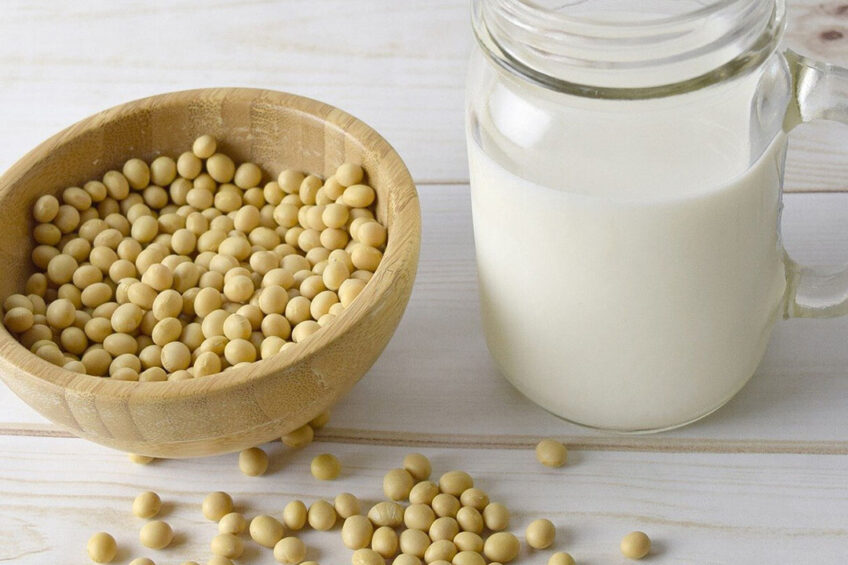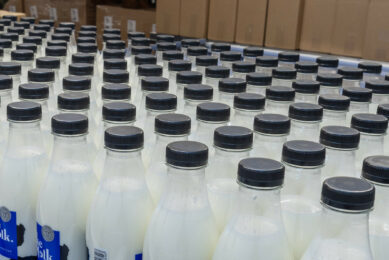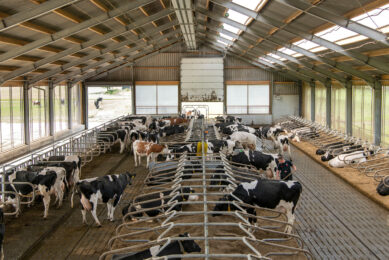Dairy product alternatives: What is the situation?

With the future of US dairy farming at serious risk according to some, how is the US dairy industry fighting back, and what may happen in future?
How dairy production in various parts of the world is being affected by the boom in dairy alternative products may not be quite uniform, but in the US and Europe, it is being taken very seriously.
“The recent surge of market share of the plant-based non-dairy alternatives into the beverage industry has seriously dampened the prospect of steady growth of the traditional milk and dairy industry in the US,” notes Dr Young Woo Park in a January 2021 journal paper. “This continuous trend of tremendous economic losses or business downfalls of the dairy industry has placed many current dairy operations and farmers on the verge of bankruptcy of their businesses, including many large dairy corporations in the US and other Western countries.” Park is a fellow of the American Dairy Science Association and an adjunct professor emeritus in the Department of Food Science & Technology at the University of Georgia.

Dairy alternatives, including ‘milks’ made from soy, almonds, cashews, oats and more, are a very fast-growing food product segment. In 2019, Transparency Market Research, for example, pinpointed the global value of the plant-based milk market along at US$14 billion, and forecasts an approximate annual growth of 8% through to 2029. According to a Fior Markets report, the global vegan ‘butter’ market is expected to grow to US$1.77 billion by 2026.
For its part, Innova Market Insights notes that plant-based dairy alternatives have expanded into “a broad range of non-dairy spoonable and drinking yoghurts, cheeses, creamers, and butters. On an indexed basis, dairy alternative drinks are up 60% and spoonable non-dairy yoghurts have doubled between 2015 and 2019.”
 Dairy product markets
Dairy product markets
Dairy Global offers readers access to the futures market a clear overview of prices for: raw milk, dry whey, skimmed milk powder, cheese, and butter. Stay up to date…
Among the many dairy alternative product launches in 2020 were ‘Sojade So Soja’ lemon-flavour fermented soya yoghurt alternative (Belgium), ‘First Press Merchants Cold Drip Coffee Iced Mocha with Almond Milk’ (Australia) and ‘Alpro Barista Oat Drink’ (Bulgaria). More recently, a quick internet search reveals that in February 2021 alone, new plant-based dairy product launches in North America included ‘Sweetpea’ chickpea ice cream alternative, Hälsa oatmilk yoghurt, Ripple plant-based Kids Milk with DHA, Better than Milk (in almond, oat and hazelnut) and ‘KitsCheeze’ made by a firm called Modern Meat. This spring, a Canadian firm called Future of Cheese will launch organic plant-based butter, followed by plant-based versions of cream cheese and other popular cheeses.
Dairy industry fighting back
One way in which the US (and EU) dairy industry is fighting back against encroachments from dairy alternatives is to call for state and federal governments to restrict use of the word ‘milk’ to milk from animals. The US Food and Drug Administration is looking into the issue. Legislatures of North Carolina and Maryland have already passed related laws, but they won’t take effect unless a number of other states pass similar measures. And as explained in a Pew Trusts article, in 2019, Louisiana, Nebraska, and Pennsylvania passed resolutions urging the federal government to act. In 2020, legislatures in Kentucky, New York, Oklahoma, Virginia, and West Virginia also addressed the issue and Wisconsin passed 2 bills. (In Wisconsin alone, according to Bloomberg “between 2 and 3 family dairy farms go out of business every single day,” although some still operate as farms. In that state, the number of dairy farms has dropped from over 75,000 in the early 1970s to about 7,400 in 2020).
A closer look at consolidation in the US
In the US, dairy industry consolidation continues. Farms with thousands of cows on site have sustainability challenges, but regulations and technology are keeping pace.
In late 2020, the European Parliament voted to enact Amendment 171, known as the ‘Dairy Ban,’ which extends existing prohibitions of labels such as ‘vegan cheese’ and ‘oat milk’ that imitate dairy products. Swedish oat ‘milk’ maker Oatly is currently fighting back with a humorous ad campaign. Meanwhile, Oatly is investing tens of millions of dollars with Singapore-based beverage firm Yeo’s on a new factory in Singapore, hoping consumers in the Asia-Pacific market will choose to buy its oat-based products.
It is hard to predict how the labelling fight will go, but many who oppose labelling restrictions believe that consumers are not confused between milks made from field crops/nuts and milk from a cow or goat. Many labels of dairy alternatives also include the words ‘vegan,’ ‘non-dairy,’ ‘dairy-free’ and ‘plant-based.’
Nutrition and education
In Park’s view, if it is to survive, the US dairy industry must educate the public about the nutritional value of cow’s milk – with dairy companies working together on this and pooling financial resources. He notes that “the vegetarians and the manufacturers of plant-derived alternative milks may have been misleading the public with respect to the true value of these products. Numerous studies have demonstrated the superior nutrient profile and bioactive components of cow and other ruminant natural milk.”

However, many note that the gap is closing between the nutritional value of alternative milks and cow milk. Already most soy milks are close to cow milk in nutritional profile, and whether the alternative product is akin to milk, yoghurt, cheese, or ice cream, product formulations seem to generally be getting closer (higher in protein for example) by the day.
It must also be noted that consumers who buy dairy alternatives do not do so for nutrition but because they like the taste or are allergic to cow milk. Animal welfare is another significant purchase driver. Just recently in Italy, a proposed scheme involving animal welfare groups was announced to have 5 dairy product labelling categories based on how a dairy farm is operated (and cows are therefore managed), from organic to intensive.
Sustainability of the dairy industry is also a concern, with some believing it’s much more sustainable to ‘skip the animal step’ and go straight from crops to the production of dairy-like products. In what appears to be a move to reduce its carbon footprint in this vein, global coffeeshop chain Starbucks has been encouraging its customers to use milk alternatives instead of cow milk – and while this action could also be an attempt to cut costs, it is succeeding.
Marketwatch reported on 7 April that Starbucks has an oat milk shortage at some of its US locations, and only started offering oat milk nationwide in early March this year (the chain also offers soy, coconut and almond milks). According to Bloomberg, US oat milk sales grew from US$4.4 million in 2017 to US$29 million in 2019.
 Dairy product markets
Dairy product markets
Dairy Global offers readers access to the futures market a clear overview of prices for: raw milk, dry whey, skimmed milk powder, cheese, and butter. Stay up to date…
New farming options
Beyond fighting this issue on a labelling front and education fronts, some are calling for government action in the US, at least to help smaller dairy farmers from having to quit. In the McGill Business Review in September 2020, Daniela Garabito stated that “to maintain the livelihood of smallholder dairy farmers and the rural communities that depend on them, extensive government action and direct assistance…is required…The American administration must also proactively provide financial and educational resources to help farmers adapt their land and skills to other crops, animals, or alternate uses.”
Among some of the suggested alternatives to US dairy farming on the internet are growing hemp (in high demand for its heart-healthy oil and meal, especially organic), maple syrup production, and agri-tourism.

If you can’t beat them, join them?
However, just as traditional meat companies such as Maple Leaf and Cargill are actively investing in the production of alternative meat products, as far back as 2019 (as reported in a US publication called the Bullvine), large dairy companies in the US were already producing alternative dairy products. In the case of a large firm called Hood, it offers Planet Oat milk (in original, vanilla, extra creamy, and dark chocolate) and oat milk creamer in French Vanilla, Caramel, and Coffee Cake. In the Bullvine article, a Hood representative states that “a lot of small dairy companies from upstate New York to the Midwest” already offer plant-based milks.
Similarly in Europe, France-based Bel Group, which offers the famous Laughing Cow, Babybel and Boursin cheese products, now has a majority stake in vegan cheese-maker All in Foods. Bel has also already launched ‘Boursin Dairy-Free Cheese Spread Alternative Garlic & Herbs,’ and ‘Laughing Cow Blends’ wedges, which mix cheese with chickpea and other plant-based protein.
It could be that as demand for dairy products drops and more blended products become available, the dairy industry in the US and beyond may become like the Neanderthals, who (say many experts) did not go extinct per se but interbred with humans and so still survive to this day in a blended form.
It is certain, however, that the dairy industry worldwide must continue to fight the popularity of alternative products on many fronts.
Little impact down under
In Australia, dairy alternatives are not currently having a tangible impact on dairy farmers, according to John Droppert, Dairy Australia’s manager of Industry Insights & Analysis. “As in many markets, dairy alternatives are growing in popularity in Australia,” he says, and although there has been “a small decline in per capita liquid milk consumption over recent years…per-capita consumption of other dairy products in the Australian domestic market is stable or growing.” (See table)
Indeed, Droppert says that due to drought and other challenges affecting farmers in recent years, Australia’s milk production has been lower overall in the past decade and maintaining supply to current domestic and export markets “is more of a challenge than dealing with an oversupply.”
Join 13,000+ subscribers
Subscribe to our newsletter to stay updated about all the need-to-know content in the dairy sector, two times a week.










